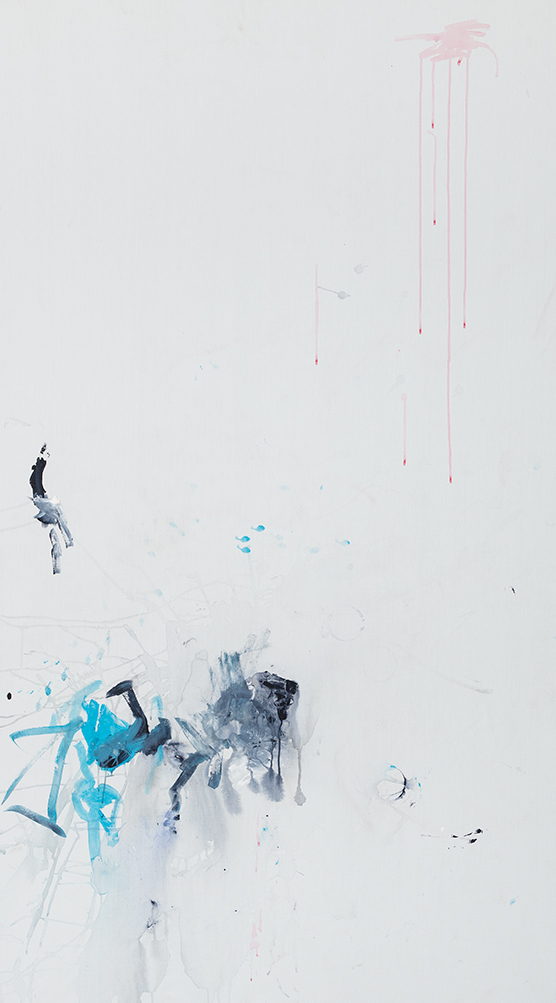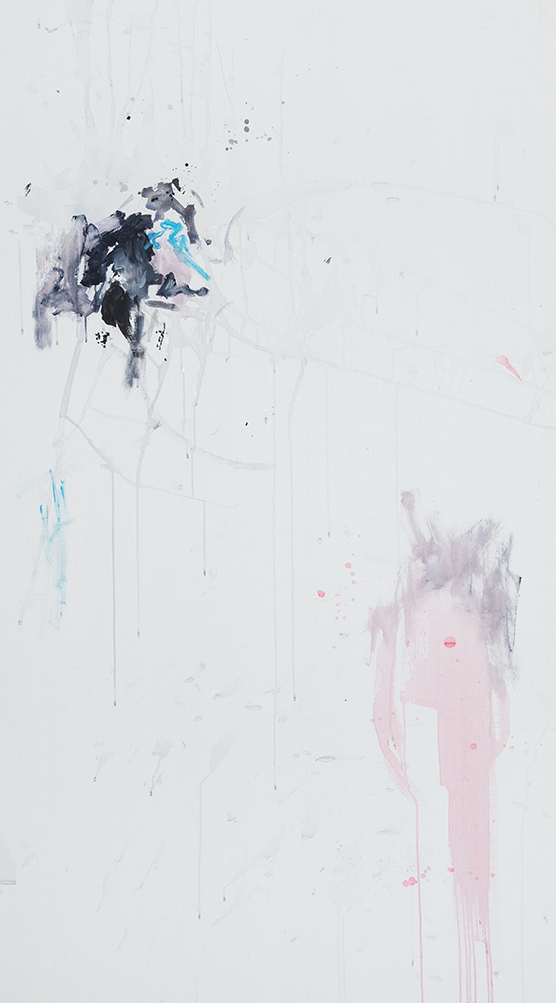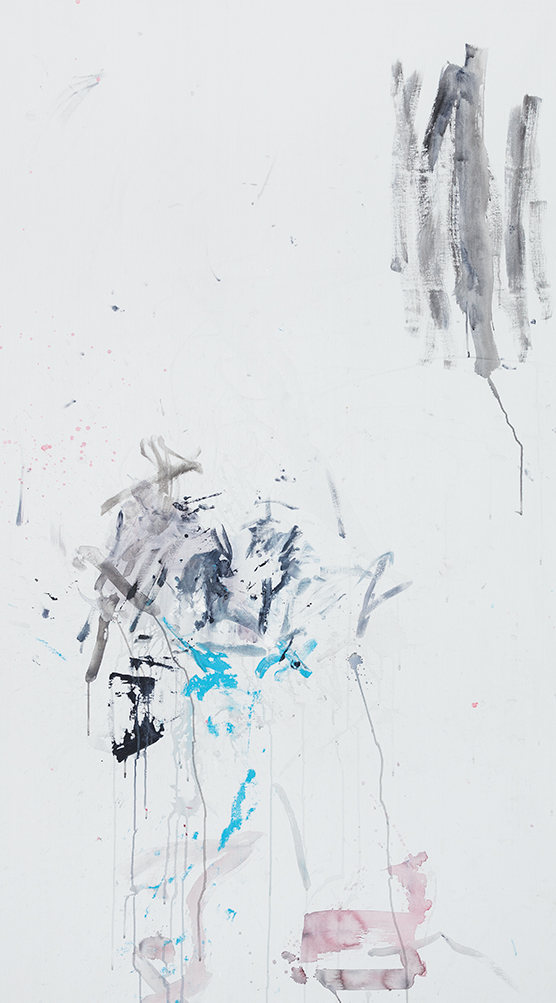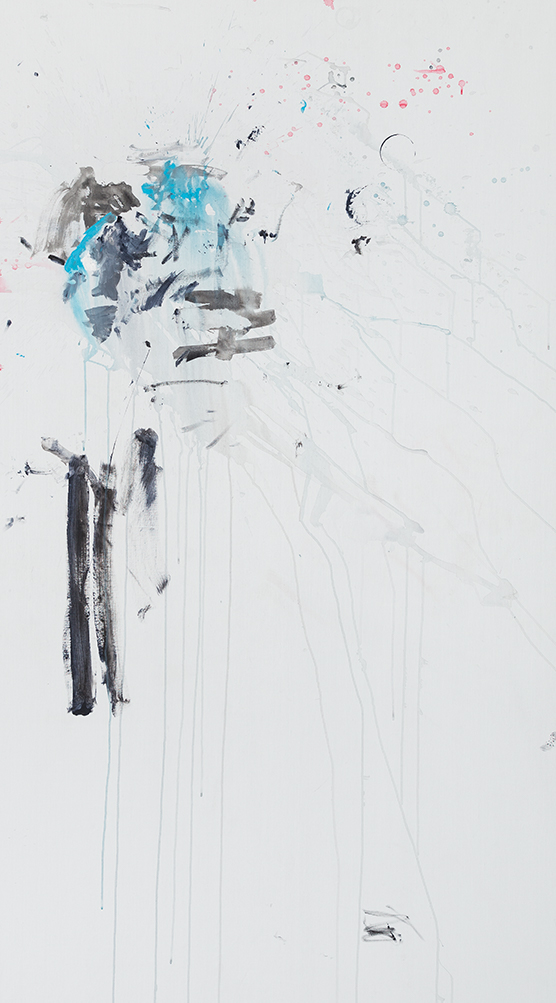On December 10, 1998, the writer José Saramago received the Nobel Prize for Literature. In his speech at the awards ceremony, he criticized the world’s apathy regarding the misfortune of others: “the same schizophrenic humanity that is capable of sending instruments to a planet to study the composition of its rocks, is indifferent to the death of millions of people by hunger. It is easier to get to Mars than to our neighbour”. The Fugue series intends to propose a reflection on this indifference. The five abstract paintings feature a portrait – invisible to the naked eye – of women and children who were forced to leave their countries due to political conflicts or natural catastrophes. The title of each of the paintings – Haya, Ewa, Ayeesha, Chime and Casho – corresponds to a female name used respectively in each of the five countries where 2/3 of the world’s refugees come from: Syria, Afghanistan, South Sudan, Myanmar and Somalia. Crises in Syria, Afghanistan and South Sudan have displaced more than 11 million people around the world – more than half of the refugee population worldwide. Meanwhile, conflict and climate hazards in Myanmar and Somalia have forced millions more to leave their homes behind.
Download the app
Haya

After war erupted in March 2011, the Syria crisis has accelerated dramatically. It took two years for 1 million people to be displaced. Another million were displaced within six months. Now seven years on, more than half of the pre-war population who has been forcibly displaced are seeking safety in neighbouring countries. That’s more than 11 million people on the run, including some 6.3 million people who have escaped across the borders.
Ewa

Years of unemployment, insecurity and political instability have led to a massive migration from Afghanistan. Nearly 2.6 million people have been forced to leave the country while over one million people are estimated to be living in prolonged displacement. Approximately 1,100 people a day — mostly women and children — were forcibly displaced by violence in 2017. Today, over half of the people displaced by conflict in Afghanistan have been displaced at least twice.
Ayeesha

Africa’s largest refugee crisis is in South Sudan. More than 4 million people have been uprooted from their homes since the start of a brutal civil war in 2013, including about 2.4 million people who have been forced to cross into neighbouring countries, the majority of them women and children. Ongoing warfare, flooding and drought continue to worsen. There are massive needs for clean water, food, shelter, health care, sanitation and protection across the country.
Chime

Since violence broke out in the north of Myanmar in August 2017, more than 900,000 Rohingya have fled to the southeast of Bangladesh. The speed and scale of the influx over the course of a three-month period has placed tremendous strain on host communities. At least 1.3 million people — Rohingya refugees and Bangladeshi host communities — rely on humanitarian assistance to meet their basic needs. More than half of them are children.
Casho

More than two decades of ongoing conflict and natural hazards such as prolonged drought and flooding have driven nearly 1 million Somalis to live in destitute refugee camps, while some 2.1 million people remain displaced within the country. Some 2.5 million people are unable to meet daily food needs, including over 300,000 children suffering from acute malnutrition. Almost half of the country is in need of assistance.